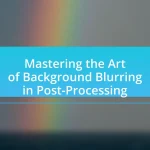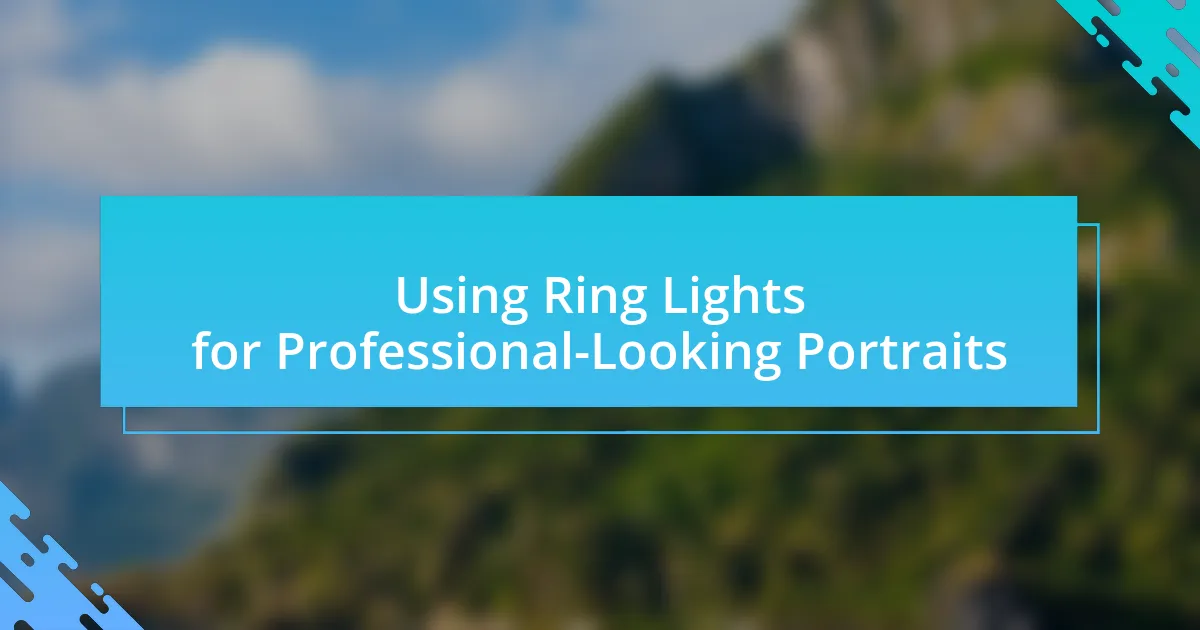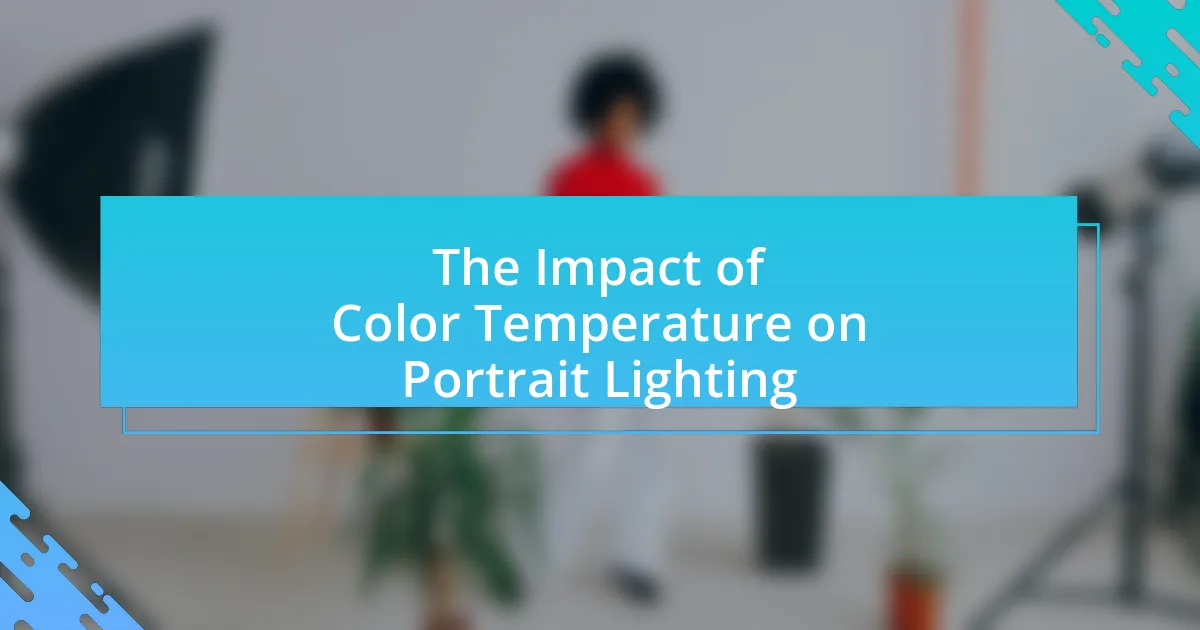The article focuses on the critical role of shadows in enhancing depth in portrait photography. It explains how shadows create contrast and dimension, defining facial features and separating the subject from the background. Key topics include the types of shadows used, their interaction with light, and techniques for manipulating shadows to improve composition and emotional impact. Additionally, the article addresses common challenges photographers face with shadows and offers best practices for effectively incorporating them into portrait work. Understanding these elements is essential for achieving visually engaging and three-dimensional portraits.
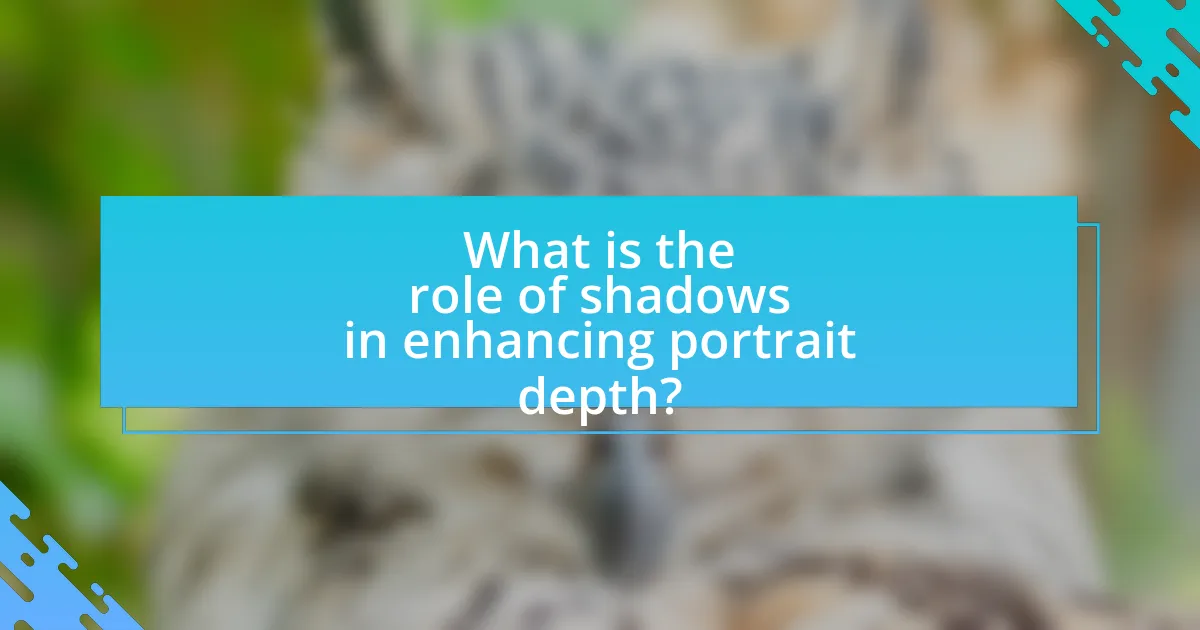
What is the role of shadows in enhancing portrait depth?
Shadows play a crucial role in enhancing portrait depth by creating contrast and dimension. They help to define facial features and separate the subject from the background, making the portrait more visually engaging. For instance, shadows can accentuate cheekbones and jawlines, adding a three-dimensional quality to the image. Studies in photography indicate that effective use of shadows can lead to a more dynamic composition, as they guide the viewer’s eye and create a sense of realism.
How do shadows contribute to the perception of depth in portraits?
Shadows enhance the perception of depth in portraits by creating contrast and defining the contours of the subject’s features. This contrast allows viewers to distinguish between different planes of the face, such as the forehead, cheeks, and chin, which contributes to a three-dimensional appearance. For instance, a study published in the journal “Vision Research” by researchers at the University of California demonstrated that shadows significantly influence depth perception by providing visual cues that indicate the spatial relationship between objects. Thus, effective use of shadows in portraiture not only adds realism but also guides the viewer’s eye, enhancing the overall depth of the image.
What are the different types of shadows used in portrait photography?
The different types of shadows used in portrait photography include cast shadows, form shadows, and core shadows. Cast shadows occur when an object blocks light, creating a shadow on a surface, which adds depth and context to the portrait. Form shadows are the gradual transitions of light and dark on the subject itself, enhancing the three-dimensionality of the face or body. Core shadows are the darkest areas on the subject, typically found in the recesses of features like the eyes or under the chin, which help to define the shape and contours of the subject. These shadow types are essential for creating visual interest and depth in portrait photography.
How do shadows interact with light to create depth?
Shadows interact with light to create depth by providing contrast and defining the contours of objects. When light illuminates a subject, it casts shadows that reveal the three-dimensional form and spatial relationships within a scene. For example, in portrait photography, the placement of light sources affects how shadows fall on the face, enhancing features and creating a sense of volume. This interplay between light and shadow is crucial; studies in visual perception indicate that our brains interpret shadows as cues for depth, allowing us to perceive the relative distance and shape of objects.
Why are shadows important in portrait composition?
Shadows are important in portrait composition because they create depth and dimension, enhancing the overall visual impact of the image. By strategically placing shadows, photographers can define facial features, add contrast, and guide the viewer’s eye to focal points within the portrait. For instance, shadows can emphasize cheekbones or the jawline, making the subject appear more three-dimensional. This technique is supported by the principles of light and shadow in photography, where the interplay between light sources and surfaces can dramatically alter the perception of form and space.
How do shadows affect the viewer’s emotional response to a portrait?
Shadows significantly influence the viewer’s emotional response to a portrait by creating depth and enhancing the mood. The presence of shadows can evoke feelings of mystery, drama, or introspection, depending on their intensity and placement. For instance, a portrait with deep shadows may convey a sense of melancholy or seriousness, while softer shadows can create a more serene or inviting atmosphere. Research indicates that the use of chiaroscuro, the contrast between light and dark, can intensify emotional engagement, as seen in the works of artists like Caravaggio, who effectively used shadows to evoke strong emotional reactions. Thus, shadows play a crucial role in shaping how viewers perceive and emotionally connect with a portrait.
What techniques can photographers use to manipulate shadows for depth?
Photographers can manipulate shadows for depth by using techniques such as controlling light direction, adjusting the distance of the light source, and employing reflectors. By positioning the light source at various angles, photographers can create longer or shorter shadows, which enhances the three-dimensionality of the subject. For instance, side lighting can produce dramatic shadows that emphasize facial features, while backlighting can create silhouettes that add depth to the composition. Additionally, adjusting the distance of the light source affects the intensity and softness of the shadows; closer light sources create harsher shadows, while distant sources yield softer shadows, contributing to a more nuanced portrayal. Reflectors can also be used to bounce light back onto the subject, filling in shadows and creating a balanced depth effect. These techniques are widely recognized in photography, as they directly influence the perception of depth in portraits.
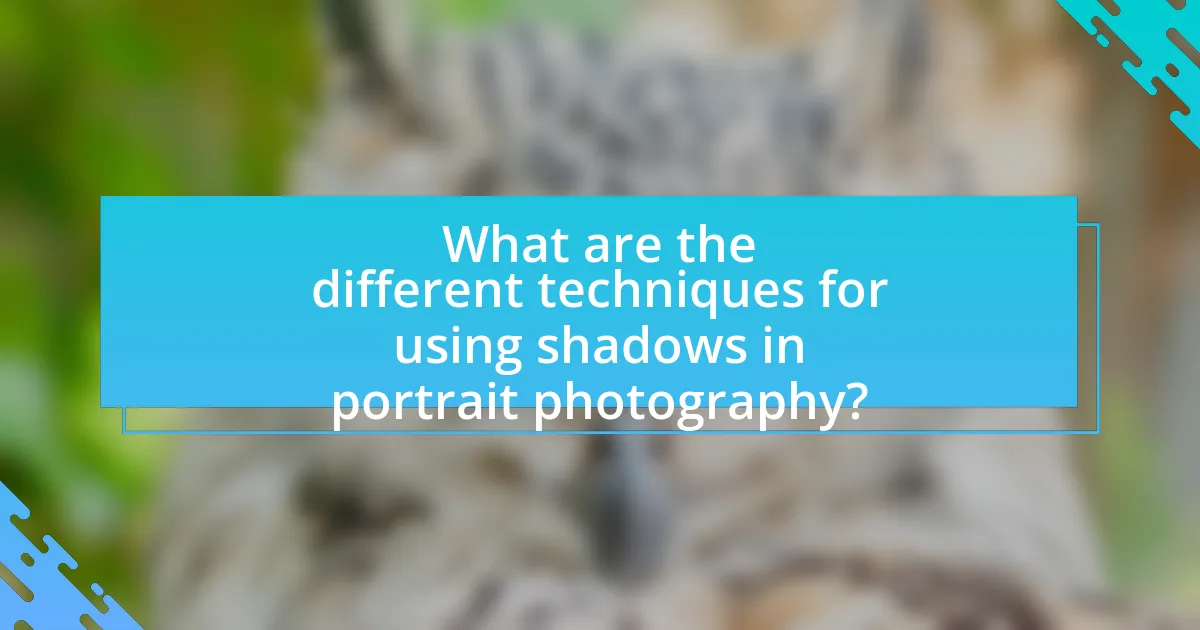
What are the different techniques for using shadows in portrait photography?
Different techniques for using shadows in portrait photography include side lighting, backlighting, and using reflectors. Side lighting creates depth by casting shadows on one side of the subject’s face, enhancing facial features and adding dimension. Backlighting, where the light source is behind the subject, can create dramatic silhouettes and highlight the contours of the subject, while also producing soft shadows that add interest. Using reflectors can manipulate shadows by bouncing light onto the subject, softening harsh shadows and creating a more balanced exposure. These techniques are widely recognized in photography for their effectiveness in enhancing the visual impact of portraits.
How can lighting angles influence shadow creation?
Lighting angles significantly influence shadow creation by determining the direction, length, and intensity of shadows cast by subjects. When light sources are positioned at different angles relative to a subject, the resulting shadows vary in shape and depth, which can enhance the three-dimensionality of a portrait. For instance, low-angle lighting creates long, dramatic shadows that can emphasize facial features, while high-angle lighting produces softer, shorter shadows that may flatten the appearance of the subject. Studies in photography and visual arts demonstrate that manipulating lighting angles can effectively alter the mood and perception of depth in portraits, making shadows a crucial element in enhancing visual interest and dimensionality.
What are the best lighting setups for creating dramatic shadows?
The best lighting setups for creating dramatic shadows include using a single hard light source positioned at an angle to the subject, such as a spotlight or a bare bulb. This setup emphasizes the contours of the face and body, producing stark contrasts and deep shadows. Additionally, using a low-key lighting technique, where the background is kept dark while the subject is illuminated from one side, enhances the shadow effect. This method is supported by the principles of chiaroscuro, which highlight the interplay of light and shadow to create depth and dimension in portraits.
How does natural light differ from artificial light in shadow creation?
Natural light creates softer, more diffused shadows compared to artificial light, which often produces sharper, more defined shadows. This difference arises because natural light, such as sunlight, scatters through the atmosphere and interacts with various surfaces, leading to a gradual transition between light and shadow. In contrast, artificial light sources, like flash or spotlights, emit concentrated beams that can create stark contrasts and well-defined edges in shadows. Studies in photography indicate that the quality of light significantly influences shadow characteristics, with natural light typically enhancing the depth and dimensionality of portraits due to its softer shadow edges.
What role does post-processing play in enhancing shadows?
Post-processing plays a crucial role in enhancing shadows by allowing photographers to manipulate shadow intensity, contrast, and detail after the initial capture. This process enables the adjustment of shadow areas to create a more dynamic range, improving the overall depth and dimensionality of a portrait. Techniques such as dodging and burning can selectively lighten or darken specific areas, thereby emphasizing facial features and adding a three-dimensional quality to the image. Additionally, software tools can enhance shadow clarity, making them appear richer and more defined, which contributes to the visual impact of the portrait.
How can editing software be used to adjust shadows for depth?
Editing software can be used to adjust shadows for depth by utilizing tools such as shadow sliders, curves, and layer blending options. These features allow users to manipulate the intensity and direction of shadows, enhancing the three-dimensionality of a portrait. For instance, increasing shadow contrast can create a more dramatic effect, while softening shadows can produce a more subtle appearance. This manipulation is crucial in portrait photography, as it helps to define facial features and adds visual interest, ultimately improving the overall composition.
What are common mistakes to avoid when editing shadows in portraits?
Common mistakes to avoid when editing shadows in portraits include over-darkening shadows, which can lead to loss of detail and an unnatural appearance. Additionally, neglecting to maintain a consistent light source can create confusion in the image, making it look unrealistic. Another mistake is failing to balance shadows with highlights, resulting in a flat image that lacks depth. Lastly, using harsh contrast without subtlety can create an unflattering look, detracting from the subject’s features. These errors can significantly impact the overall quality and effectiveness of the portrait.
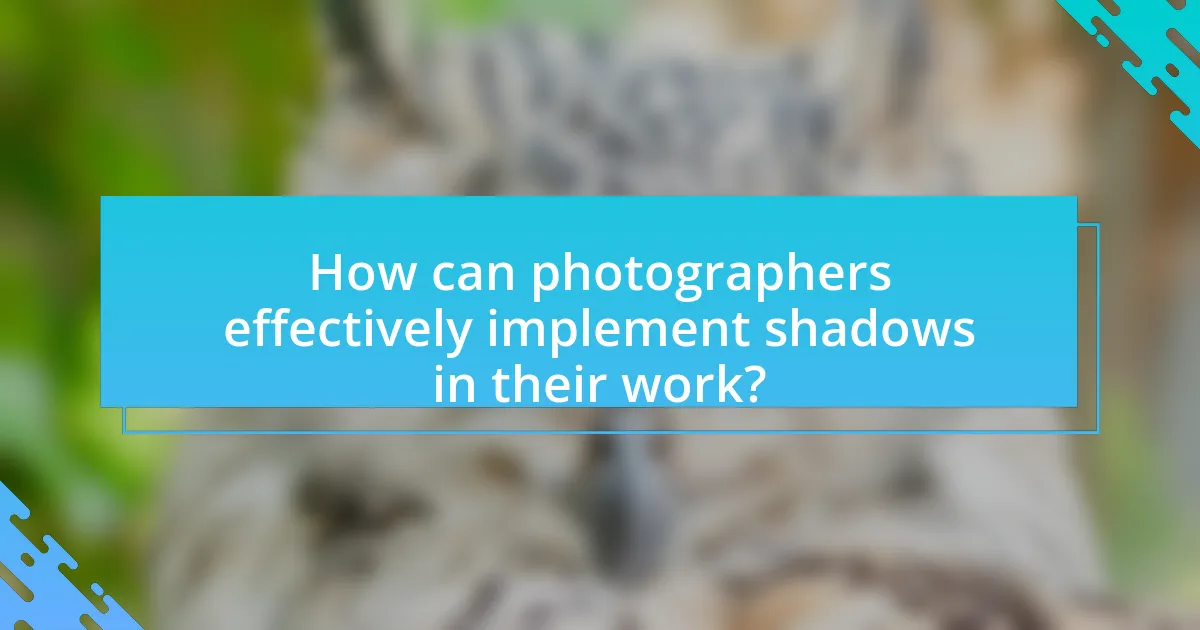
How can photographers effectively implement shadows in their work?
Photographers can effectively implement shadows in their work by utilizing controlled lighting to create depth and dimension in portraits. By positioning the light source at an angle, photographers can cast shadows that enhance facial features and add a three-dimensional quality to the image. For instance, using a soft light source can produce gentle shadows that define cheekbones and jawlines, while harsher light can create dramatic contrasts that emphasize the subject’s expressions. Studies in photography demonstrate that shadows can guide the viewer’s eye and create focal points, thereby enhancing the overall composition.
What practical tips can enhance the use of shadows in portraits?
To enhance the use of shadows in portraits, photographers should consider the direction and quality of light, as well as the positioning of the subject. Utilizing soft, diffused light can create gentle shadows that add depth without harsh contrasts, while hard light can produce dramatic shadows that emphasize facial features. Positioning the light source at a 45-degree angle to the subject can enhance the three-dimensionality of the face, creating more dynamic shadows. Additionally, experimenting with reflectors can help fill in shadows selectively, allowing for a balanced exposure that maintains depth. These techniques are supported by the principles of light and shadow in photography, which indicate that the interplay between light and shadow is crucial for creating depth and dimension in portraits.
How can photographers experiment with shadows to find their style?
Photographers can experiment with shadows by manipulating light sources and angles to create diverse effects that reflect their unique style. By using natural light, artificial light, or a combination of both, photographers can observe how shadows interact with subjects, enhancing depth and dimension in portraits. For instance, positioning a light source at different heights or distances can dramatically alter the shadow’s shape and intensity, allowing photographers to explore various moods and aesthetics. This experimentation can lead to distinctive styles, as evidenced by renowned photographers like Richard Avedon, who utilized shadows to add drama and contrast to his portraits, demonstrating that shadows are essential tools for artistic expression in photography.
What are some common challenges photographers face with shadows?
Photographers commonly face challenges such as harsh shadows, inconsistent lighting, and loss of detail in shadowed areas. Harsh shadows can create unflattering contrasts on subjects, making it difficult to achieve a balanced exposure. Inconsistent lighting occurs when natural light changes or when multiple light sources create conflicting shadows, complicating the overall composition. Additionally, loss of detail in shadowed areas can result in underexposed images, where important features of the subject become indistinguishable. These challenges necessitate careful planning and technique adjustments to effectively manage shadows in portrait photography.
What are the best practices for using shadows in portrait photography?
The best practices for using shadows in portrait photography include controlling light direction, utilizing soft shadows, and incorporating shadows to enhance facial features. Controlling light direction allows photographers to create depth by positioning the light source at an angle, which casts shadows that define the subject’s contours. Soft shadows, achieved through diffused lighting, reduce harsh contrasts and create a more flattering appearance. Additionally, strategically placing shadows can emphasize features such as cheekbones and jawlines, adding dimension to the portrait. These techniques are supported by the principle that shadows can enhance visual interest and depth, making the subject more engaging to the viewer.
How can understanding shadows improve overall portrait quality?
Understanding shadows can significantly enhance overall portrait quality by adding depth and dimension to the subject. Shadows create contrast, which helps to define facial features and shapes, making the portrait more visually engaging. For instance, using soft shadows can create a flattering effect on the skin, while harsh shadows can add drama and intensity. Studies in photography emphasize that effective shadow management can lead to a more three-dimensional appearance, improving the viewer’s perception of the subject.
What resources are available for learning more about shadows in photography?
Books, online courses, and photography blogs are valuable resources for learning about shadows in photography. Notable books include “Light, Science & Magic” by Fil Hunter, which explains the principles of light and shadow, and “The Photographer’s Eye” by Michael Freeman, which discusses composition, including the role of shadows. Online platforms like MasterClass and Skillshare offer courses specifically focused on lighting techniques, including shadow manipulation. Additionally, photography blogs such as PetaPixel and Fstoppers frequently publish articles and tutorials that cover shadow techniques in portrait photography, providing practical insights and examples.






